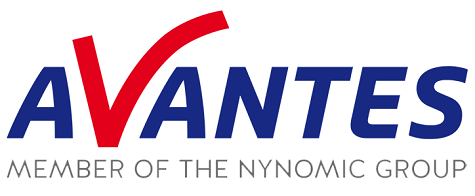Fluorescence spectroscopy (also called spectrofluorometry or fluorometry) is a kind of electromagnetic spectroscopy, which analyzes fluorescence from a sample.
It involves the use of a light beam that excites the electrons in molecules of certain compounds and causes them to emit light in a typical scenario but not necessarily, visible light.
It is a useful technique in many biological (chlorophyll and carotenoid), biochemical (fluorescence diagnosis of malignancies), and environmental applications. The amount of fluorescence energy is 3% the amount of excitation light energy for most fluorescence applications.. Fluorescence light has a lower energy or a higher wavelength when compared to the excitation energy and is usually scattered light. This implies energy is emitted in all directions.
The AvaSpec-ULS2048x64TEC Spectrometer
For optimal performance assuming the time acquisition window is not restricted, Avantes recommends the AvaSpec-ULS2048x64TEC Spectrometer for this application, as it can support long integration times often exceeding 5s. The AvaSpec-ULS2048XL-EVO back-thinned CCD spectrometer is recommended when higher speed acquisition is needed. For the highest sensitivity, the top model of the SensLine, AvaSpec-HERO spectrometer is recommended.
While the measurement setup is configured, preventing excitation light from entering the spectrometer is an important issue. Possible methods to accomplish this, where one does not exclude the other, include:
- The use of an AvaLight-LED light source which typically has a narrow bandwidth enabling the limitation of excitation to shorter wavelengths that are not part of the emission spectrum
- Use of a broadband light source such as the AvaLight-HAL for high output in combination with an (interference) band-pass or low-pass filter
- Ensure the optical path for excitation light and fluorescence are perpendicular. This means the excitation light will not enter the receiving fiber (use the CUV-UV/VIS-FL or the CUV-DA)
- The fluorescence decay time is used to separate excitation energy from the integration time start pulse. Use a pulsed light source to accomplish this (pulsed laser or AvaLight-XE Xenon flash)

This information has been sourced, reviewed and adapted from materials provided by Avantes BV.
For more information on this source, please visit Avantes BV.